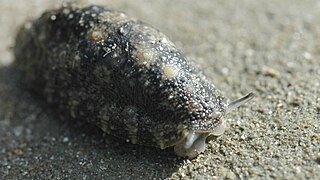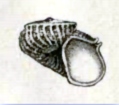Ivesia may refer to two different genera:
- IvesiaBlume, a taxonomic synonym for the spider genus Nesticus
- IvesiaDecne., a taxonomic synonym for the plant genus Potentilla
Ivesia may refer to two different genera:

Genus is a taxonomic rank above species and below family as used in the biological classification of living and fossil organisms as well as viruses. In binomial nomenclature, the genus name forms the first part of the binomial species name for each species within the genus.
Diplomorpha may refer to:
Rhynchopera may refer to two different genera of plants:
Ancistrodon is a taxonomic synonym that may refer to any of the following genera:
The Botanical and Zoological Codes of nomenclature treat the concept of synonymy differently.

The Polyceridae are a taxonomic family of sea slugs, dorid nudibranchs, marine gastropod mollusks within the superfamily Polyceroidea.

Lymnaeidae, common name the pond snails, is a taxonomic family of small to large air-breathing freshwater snails, aquatic pulmonate gastropod mollusks, that belong to the clade Hygrophila.

Onchidiidae are a family of small, air-breathing sea slugs. They are shell-less marine pulmonate gastropod molluscs. Onchidiidae is the only family within the superfamily Onchidioidea.
Platylophus may refer to

The Littorinidae are a taxonomic family of over 200 species of sea snails, marine gastropod molluscs in the clade Littorinimorpha, commonly known as periwinkles and found worldwide.

Scissurellidae, sometimes known by the common name little slit snails, are a taxonomic family of minute sea snails, marine gastropod molluscs or micromolluscs in the clade Vetigastropoda.
Irwinia is the scientific name of two genera of organisms and may refer to:

The Harpidae, known as the harp snails, are the members of a taxonomic family of large predatory sea snails, marine gastropod mollusks.
Tylosperma may refer to two different genera:
Mitostigma may refer to two different genera of plants:
Neilreichia may refer to two different genera of plants:
Anthopogon may refer to two different genera of plants:
Leptostachys may refer to two different genera of plants:
Heuffelia may refer to two different genera of plants:

The Interim Register of Marine and Nonmarine Genera (IRMNG) is a taxonomic database which attempts to cover published genus names for all domains of life, from 1758 in zoology up to the present, arranged in a single, internally consistent taxonomic hierarchy, for the benefit of Biodiversity Informatics initiatives plus general users of biodiversity (taxonomic) information. In addition to containing just over 500,000 published genus name instances as at May 2023, the database holds over 1.7 million species names, although this component of the data is not maintained in as current or complete state as the genus-level holdings. IRMNG can be queried online for access to the latest version of the dataset and is also made available as periodic snapshots or data dumps for import/upload into other systems as desired. The database was commenced in 2006 at the then CSIRO Division of Marine and Atmospheric Research in Australia and, since 2016, has been hosted at the Flanders Marine Institute (VLIZ) in Belgium.